Do you understand what your horse is communicating to you and other horses?
Let us breakdown communication with horses and humans, there are two areas:
- Horses communicating to other horses and humans.
- How humans communicate to horses
In this blog post, we will cover how horses communicate with each other and with us. Before trying to understand what, the communications signs are from a horse, we need to consider and understand what their natural horse behaviour is. This will allow us, as humans, to minimise the impact of our practices on them. Factoring inthese natural behaviours, will help us in making choices about the environment we choose for our horses or herd.
Horses predominantly communicate their feelings and wants visually. These signs are not always through the easy-to-spot visual cues e.g. position of ears, you need to be aware of the below that they also use:
- Face
- Head
- Ears
- Neck (it’s position)
- Tail
Fun Fact: Humans often overlook the visual communication signs on a horse’s face, and these are where all the subtle communications come from, these signs can mean fear, pain, anger, or distress.
- Alert with curiosity (Photo Credit – Scallywag)

2. Alert (Photo Credit – Jazzy)
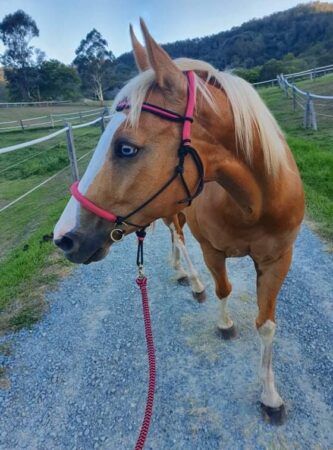
3. Angry with threat (Photo Credit – Jazzy, Buddy and Bailey)

4. Fear (Photo Credit – Jazzy and Buddy)
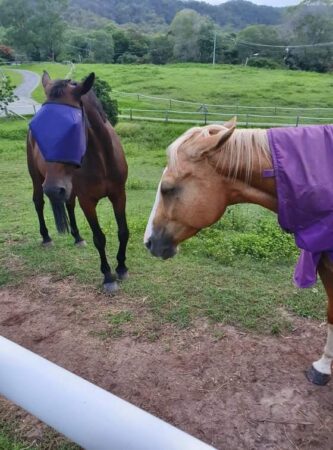
5. In Pain (Photo Credit – Scallywag)
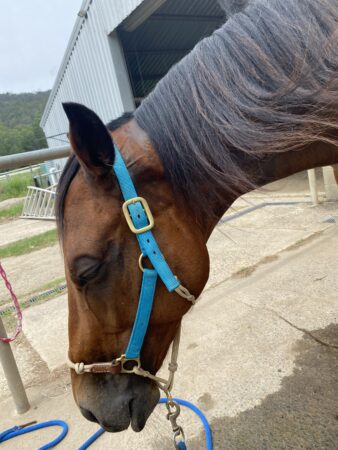
6. Relaxed (Photo credit – Bailey)
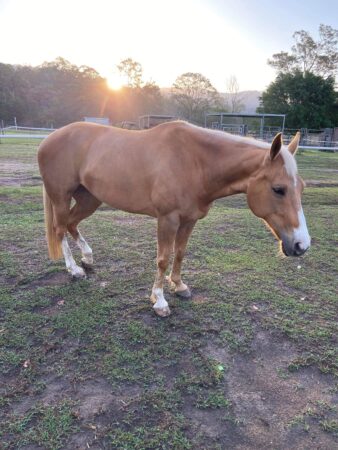
Fun Fact: Horses communicate predominantly using physical indicators (ie stance, head position etc) along with more subtle vocal sounds. All of these sources, physical and vocal, need to be taken into context when assessing their communications.
Some common sounds horses make when they are communicating vocally are:
- Neigh: a single neigh is used to contact or locate other horses or figure out what horses are around. The number of neighs increases if the horse is in unfamiliar territory.
- Squeal/Scream: We all know that mare scream/squeal – this is an expression indicating many different signals to each other. But it can also be associated with defence or aggression, please note that this sound is an expression and even if it gives us a fright, it needs to be taken in the intended context.
- Nicker: This is a greeting for something pleasant for your horse/s.
- Snort: Another sound that needs context due to so many meanings some are:
- Aggression
- Exertion
- Cleaning airway
- Fear
- Out of breath
Finally, tactile communication. This involves mutual grooming and playing, these are especially important in their wellbeing. Therefore, a herd environment is crucial in the support of your horse/s mental and physical wellbeing.
Let us drill down on play. This starts at the beginning in foal stage just like in humans. In the later years play becomes less frequent or even less likely to happen – this is where they fall back into the “flight” animal. Their instinct is to save their energy in case of danger. There are a few play categories to understand:
- Locomotive: spinning, chasing, kicking, bucking, leaping, and prancing.
- Interactive: physical contact between horses i.e. play fighting
- Manipulative: involves manipulation of an object, toys, carrots on a string etc (It is important to note that toys are not enough to enrich your horse/s life, you really need to consider a wellness strategy. If you cannot provide natural herd enrichment in your horses living environment, look at ways to provide it through yard set up, training, interaction etc.
These are just some of the many ways our horses communicate with us. When working with “Life with Horses”, we understand that horses talk loudlyin their own way, and we work to try to understand what each individual is saying. These are through the many visual cues our horses give us, and how we can better communicate our wants and needs to them.
Next time, we will look at how humans can communicate with horses.

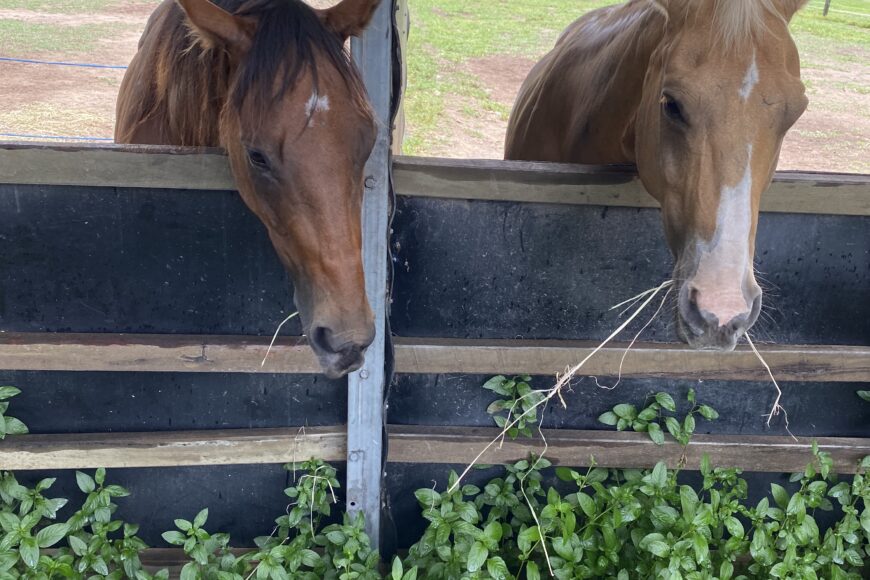
This is so cool!